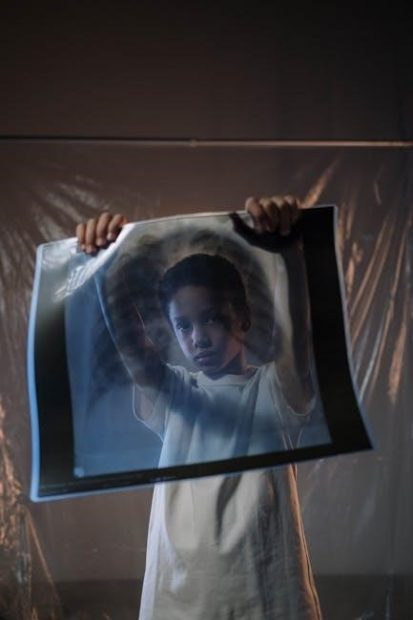The 6th edition explores the evolution of cinema, blending classic and contemporary films with digital media’s impact, offering a comprehensive guide for students and film enthusiasts alike.
1.1 Overview of the Book and Its Significance
The Film Experience 6th Edition is a comprehensive guide to understanding cinema, exploring its history, key concepts, and cultural impact. This edition updates classic content with contemporary insights, making it a vital resource for film students and enthusiasts. It covers diverse topics, from film genres and visual design to sound and editing, offering a holistic view of filmmaking. The book’s significance lies in its ability to bridge theory and practice, providing readers with a deeper appreciation of cinema’s artistry and influence. Its accessible approach ensures it remains a cornerstone in film education and appreciation.
1.2 Purpose and Scope of the 6th Edition
The 6th edition of The Film Experience aims to deepen understanding of cinema’s artistry and cultural impact. It explores film history, genres, and techniques, while addressing modern trends like streaming and digital production. The book balances classic and contemporary examples, offering insights into global cinema and diverse storytelling. With updated chapters on technology and audience engagement, it serves as a comprehensive resource for film students and enthusiasts. The scope includes analyzing visual design, sound, and editing, providing a holistic view of filmmaking. This edition also emphasizes the evolving role of cinema in a digital age, making it a vital tool for film education.

Evolution of Film Technology
Film technology has transformed from silent cinema to digital innovation, with advancements in CGI, sound, and virtual production, enhancing storytelling and global accessibility through modern platforms.
2.1 Historical Development of Film Technology
The evolution of film technology began in the late 1800s with Edison’s kinetoscope, enabling individual viewing of motion pictures. The 1900s saw the rise of silent films, with hand-painted colors and live music accompaniment. The 1920s introduced sound with “talkies,” revolutionizing storytelling. Color film emerged in the 1930s, enhancing visual narratives. Widescreen formats like Cinerama and CinemaScope debuted in the 1950s, expanding cinematic immersion. The 1990s marked the shift to digital technology, with CGI and digital cameras transforming production. Today, advancements like 3D and HDR continue to redefine the medium, blending tradition with innovation for unparalleled storytelling.
2.2 Impact of Digital Technology on Filmmaking
Digital technology has revolutionized filmmaking, enabling new creative possibilities and streamlining production processes. CGI, digital editing tools, and high-resolution cameras have enhanced visual storytelling. Online platforms like NMIT Moodle provide access to resources and courses, fostering learning and collaboration. Digital distribution via streaming platforms has transformed how films reach global audiences. This shift has democratized filmmaking, allowing independent creators to produce and share content widely. The integration of digital tools has also reduced production costs and increased efficiency, making filmmaking more accessible than ever before. This technological evolution continues to shape the future of cinema and film education.
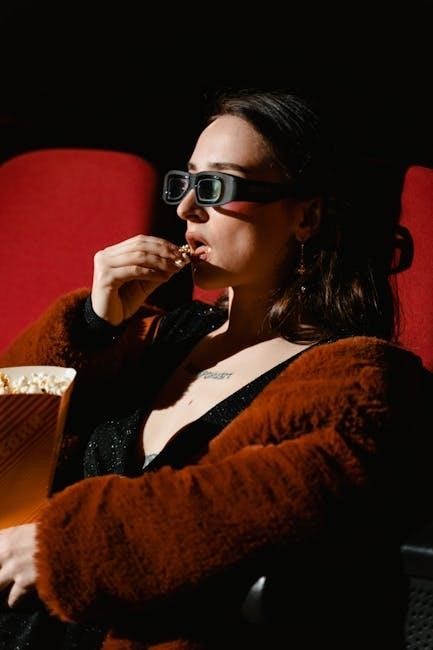
Key Concepts in Film Studies
The 6th edition explores foundational concepts like genre, visual design, and narrative structure, while introducing digital tools and their role in modern film analysis and education.
3.1 Understanding Film Genres and Their Evolution
Film genres categorize movies based on themes, styles, and storytelling conventions. From action and comedy to drama and horror, genres help audiences anticipate narratives and emotional experiences. The evolution of genres reflects cultural shifts and artistic innovation, blending traditional forms with modern twists. Classic genres like westerns and musicals have influenced contemporary cinema, while new subgenres emerge, adapting to societal changes. Understanding genres enhances film analysis, revealing how they shape audience expectations and creative expression. This section explores the dynamic nature of film genres, tracing their historical development and their role in shaping cinematic storytelling.
3.2 The Role of Visual Design in Storytelling
Visual design in film is a crucial element that enhances storytelling by creating immersive environments and guiding audience focus. Through color, lighting, and composition, filmmakers convey themes and emotions, shaping the narrative’s tone. The 6th edition explores how visual elements like costumes, sets, and cinematography collaborate to evoke specific moods and symbolize character traits or plot twists. This chapter emphasizes the importance of visual storytelling in making films engaging and meaningful, offering insights into how directors use design to communicate their vision effectively.
- Visual design shapes the film’s aesthetic and emotional impact.
- Color and lighting are key tools for setting the story’s mood.
- Composition guides the audience’s attention and interpretation.
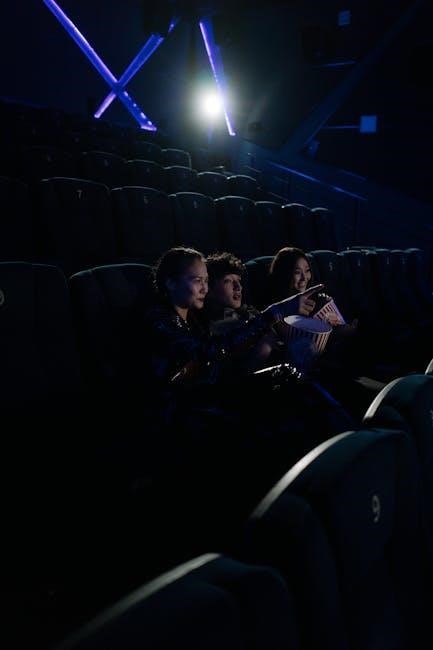
The Role of Sound in Film
Sound design enhances storytelling by creating mood, guiding narrative, and immersing audiences, blending dialogue, music, and effects to evoke emotional and intellectual responses in cinematic experiences.
4.1 Sound Design and Its Importance
Sound design is a critical element in filmmaking, enhancing the narrative and emotional depth of a scene. It encompasses dialogue, music, and sound effects, creating an immersive experience; Effective sound design guides audience emotions, sets the tone, and provides contextual clues. In The Film Experience 6th Edition, the role of sound in storytelling is explored, highlighting how it complements visual elements. From subtle ambient noises to powerful musical scores, sound design shapes the viewer’s connection to the film, making it indispensable in modern cinema.
4.2 Music and Dialogue in Film Narratives
Music and dialogue are pivotal in shaping film narratives, creating emotional depth and guiding audience engagement. Music sets the tone, evokes feelings, and underscores themes, while dialogue reveals character traits and advances plot. The interplay between these elements enhances storytelling, making scenes more impactful. Effective use of music and dialogue ensures a balanced narrative, drawing viewers into the cinematic experience. This synergy is explored in-depth, highlighting how filmmakers leverage sound to convey meaning and emotion, ultimately enriching the overall film narrative.
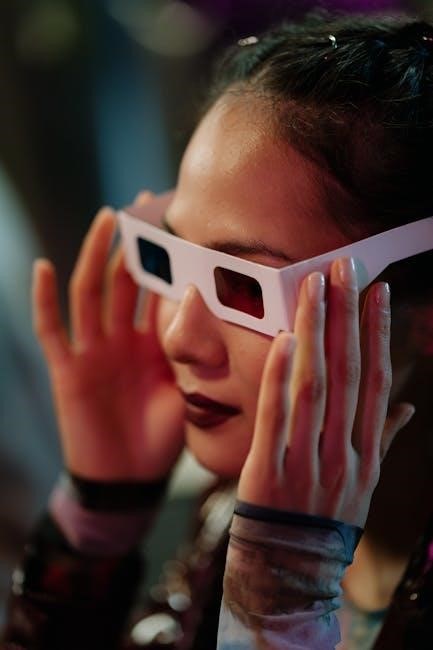
Film Editing Techniques
Film editing techniques are crucial in shaping narratives, controlling pacing, and guiding audience emotions. Different styles, from continuity to montage, create distinct storytelling effects.
5.1 The Art of Editing and Its Impact
Film editing is a crucial storytelling tool, shaping the pacing, tone, and narrative flow. Editors use techniques like continuity, montage, and cross-cutting to create emotional resonance. The 6th edition highlights how digital tools have transformed editing, enabling precise control and innovative visual styles. Resources like NMIT LMS and OpenStax provide tutorials and case studies, helping students master editing software and analyze classic films. These platforms emphasize the importance of editing in creating a cohesive and impactful cinematic experience, making it indispensable in modern filmmaking.
5.2 Types of Editing Styles and Their Effects
Film editing styles significantly influence storytelling. Continuity editing ensures seamless scene transitions, maintaining narrative flow. Montage editing compiles multiple shots to convey time, emotion, or themes. Rapid editing intensifies action, while long takes immerse viewers in real-time sequences. Each style shapes audience perception, guiding emotional engagement and pacing. Editors balance technical precision with artistic vision, enhancing the director’s intent. Understanding these styles reveals how editing transforms raw footage into a cohesive cinematic experience, making it a cornerstone of filmmaking craftsmanship and storytelling impact.
The Influence of Culture on Film
Cultural influences shape cinematic narratives, reflecting societal values and traditions. Global films showcase diverse storytelling, fostering cross-cultural understanding and appreciation of unique perspectives.
6.1 Cultural Representation in Cinema
Cultural representation in cinema reflects the diverse identities, traditions, and experiences of global communities. Films often serve as mirrors of societal values, showcasing how different cultures navigate modernity and tradition. The 6th edition highlights how cinema bridges cultural gaps, offering audiences insights into unfamiliar worlds. It explores themes like identity, diaspora, and globalization, emphasizing the role of filmmakers in shaping perceptions. Authentic representation remains a challenge, yet cinema’s power to foster empathy and understanding is undeniable. This section delves into how films portray cultural nuances, influencing both individual and collective perspectives on a global scale.
6.2 Global Cinema and Its Diversity
Global cinema showcases the rich diversity of cultures, narratives, and filmmaking styles from around the world. It highlights how different regions, such as Asia, Europe, Africa, and Latin America, contribute unique perspectives to storytelling. This diversity not only reflects local traditions but also challenges dominant Hollywood narratives. Films from global cinema often blend indigenous themes with universal human experiences, creating a bridge between cultures. The 6th edition emphasizes the importance of exploring these diverse voices, fostering cross-cultural understanding and appreciation for the art of filmmaking worldwide.
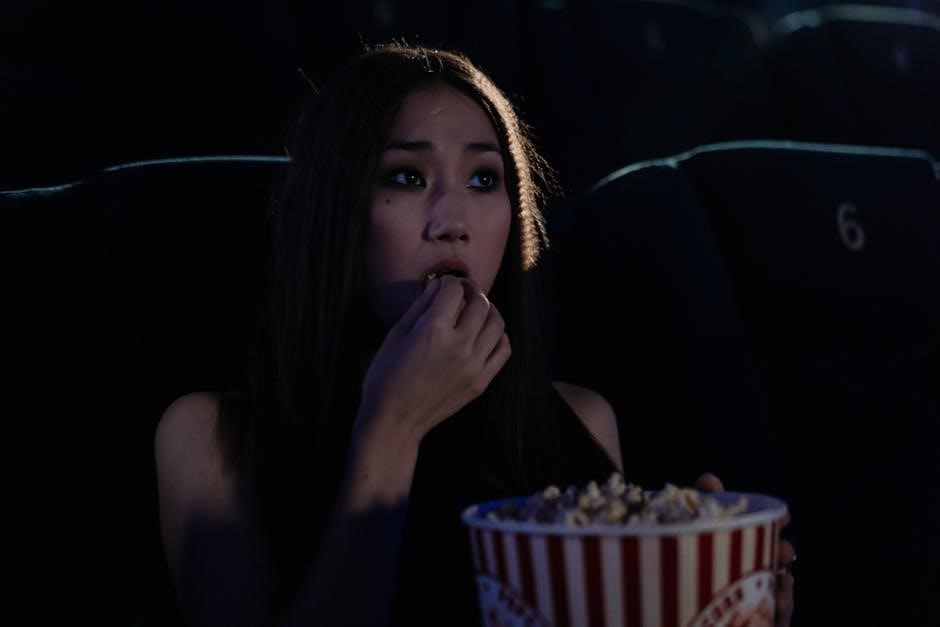
The Role of the Director
The director’s vision shapes the film, guiding actors, cinematographers, and editors to bring the script to life, ensuring a cohesive narrative and emotional resonance for audiences.
7.1 The Director’s Vision and Creative Process
The director’s vision is the cornerstone of filmmaking, shaping the narrative, tone, and emotional depth of a film. This section explores how directors interpret scripts, collaborate with writers, and translate ideas into visual stories. It delves into the creative process, from pre-production planning to on-set decisions, highlighting how directors balance artistic expression with technical execution. The chapter also examines how directors work with actors, cinematographers, and editors to realize their unique perspective, ensuring their vision aligns with the film’s overall goals and resonates with audiences.
7.2 Case Studies of Influential Directors
This section delves into the creative processes and visionary approaches of iconic filmmakers, such as Christopher Nolan and Martin Scorsese. It examines how their unique styles and storytelling techniques have shaped modern cinema. By analyzing their careers and landmark films, readers gain insights into the artistic and technical decisions that define their work. These case studies highlight the importance of a director’s vision in transforming scripts into cinematic masterpieces, offering valuable lessons for aspiring filmmakers and scholars alike.
Acting in Film
Acting in film requires precise technique, emotional depth, and adaptation to cinematic storytelling, with actors bringing characters to life through nuanced performances and psychological exploration.

8.1 The Craft of Acting for the Screen
Acting for the screen demands a unique blend of subtlety and emotional depth, as actors must convey complex narratives through facial expressions and body language. The craft requires adaptability, transitioning seamlessly from stage to screen. Techniques like method acting and improvisation are explored, emphasizing authenticity. Actors must also master dialogue delivery, aligning with the director’s vision. The 6th edition highlights how digital tools enhance performance capture, enabling nuanced portrayals. This section delves into the challenges and innovations shaping modern screen acting, offering insights into the evolving artistry of film performances.
8.2 Iconic Performances and Their Impact
Iconic performances in cinema leave an indelible mark on audiences and the industry. Actors like Marlon Brando in The Godfather and Meryl Streep in Sophie’s Choice redefine character portrayal, setting new benchmarks. Their work inspires future generations, shaping acting techniques and storytelling. These performances not only elevate films but also create cultural phenomena, embedding themselves in collective memory. The emotional depth and authenticity of such roles foster a lasting connection with viewers, ensuring their legacy endures in the world of cinema.

Film Marketing and Distribution
Film marketing strategies, including trailers and teasers, drive audience engagement, while distribution channels ensure global reach, blending traditional and digital platforms to maximize a film’s cultural and commercial impact.

9.1 Strategies for Promoting Films
Film promotion involves creating buzz through trailers, teasers, and social media campaigns. Studios partner with influencers and brands to expand reach. Premieres and festivals build hype, while targeted ads ensure visibility. Digital platforms like streaming services and online trailers enhance accessibility. Promotional tie-ins with merchandise and themed events further engage audiences. Effective marketing strategies often blend traditional and modern methods to captivate diverse audiences and maximize box office success. These tactics are crucial for attracting viewers in a competitive entertainment landscape.
9.2 The Role of Trailers and Teasers
Trailers and teasers are pivotal in film marketing, offering sneak peeks to captivate audiences and build anticipation. These concise clips highlight key moments, tone, and themes, enticing viewers without revealing plot twists. Modern trailers leverage digital platforms and social media for viral reach, enhancing their impact. They serve as strategic tools to shape audience expectations and drive box office success, reflecting the film’s essence while maintaining intrigue. Their evolution alongside technology has made them indispensable in contemporary film promotion strategies.
Audience Reception and Film Criticism
Audiences engage with films emotionally and intellectually, while critics analyze and interpret works, shaping public perception and influencing cultural discourse about cinema’s artistic and social impact.
10.1 Understanding Audience Preferences
Understanding audience preferences is crucial for filmmakers and marketers, as it shapes the creation and promotion of films. Audiences’ tastes vary based on cultural, demographic, and personal factors, influencing genre popularity and narrative appeal. Studios analyze box office trends, surveys, and streaming data to gauge preferences, ensuring content aligns with viewer expectations. This insight helps tailor marketing strategies and predict success, fostering a connection between filmmakers and their target audience. By studying these preferences, the film industry adapts to evolving tastes, ensuring relevance and engagement in a competitive market.
10.2 The Role of Film Critics in Shaping Opinions
Film critics play a pivotal role in shaping audience perceptions and industry trends. Their reviews provide insights into a film’s artistic and cultural value, influencing viewers’ decisions. Critics’ opinions often set the tone for public discourse, highlighting themes, performances, and technical aspects. In the digital age, their voices reach global audiences, blending traditional journalism with social media commentary. While critics’ perspectives can vary, their collective impact helps define a film’s legacy. However, the rise of online platforms has democratized criticism, allowing diverse voices to emerge, challenging traditional authority and fostering a broader dialogue about cinema’s role in society.
The Future of Cinema
The future of cinema is shaped by emerging technologies and streaming platforms, with educational resources like NMIT Moodle influencing film education and technological advancements.
11.1 Emerging Trends in Film Technology
Emerging trends in film technology are revolutionizing the industry, with advancements like virtual production, AI-driven editing tools, and immersive formats such as VR and AR. These innovations enable filmmakers to create visually stunning and interactive experiences, enhancing storytelling capabilities. Sustainable practices are also gaining traction, with eco-friendly production methods reducing environmental impact. Additionally, advancements in sound design and 3D audio are redefining how audiences engage with films. These trends not only push creative boundaries but also democratize filmmaking, making high-quality production accessible to independent creators. The integration of real-time rendering and cloud-based collaboration tools further accelerates the evolution of cinematic artistry.

11.2 The Impact of Streaming Platforms
Streaming platforms have revolutionized how films are consumed, offering unparalleled accessibility and diversity. They democratize content distribution, enabling independent filmmakers to reach global audiences. This shift has transformed viewing habits, with on-demand access and personalized recommendations reshaping audience preferences. Platforms like Netflix and Hulu have also influenced production, fostering niche genres and experimental storytelling. However, the rise of streaming challenges traditional cinema models, impacting box office revenues and altering the cultural significance of theatrical releases. Despite these changes, streaming platforms enrich the cinematic landscape by diversifying content and expanding creative opportunities for filmmakers worldwide.
The Film Experience 6th Edition concludes by emphasizing cinema’s enduring impact, supported by educational resources like NMIT Moodle, enriching film studies for future generations.
12.1 Summary of Key Concepts
The 6th edition of The Film Experience synthesizes essential ideas about cinema, covering film technology, genres, sound, editing, and cultural influences. It explores the director’s role, acting techniques, and the impact of global cinema. The book also examines film marketing, audience reception, and the evolving landscape of cinema, including digital advancements and streaming platforms. By blending historical context with contemporary trends, it provides a holistic understanding of film as both an art form and a cultural mirror, emphasizing the enduring relevance of cinema in shaping and reflecting society.
12.2 The Enduring Legacy of Film
Film remains a timeless art form, shaping cultures and inspiring generations. Its legacy lies in its ability to reflect societal values, challenge norms, and evoke profound emotional connections. Iconic films continue to influence contemporary storytelling, preserving history while sparking innovation. The medium’s enduring impact is evident in its adaptation to new technologies, ensuring its relevance in a rapidly changing world. Film’s power to unite and inspire underscores its lasting influence on human experience and artistic expression.
Resources for Further Learning
Explore essential e-resources like NMIT LMS, OpenStax, and Skills Commons for diverse learning tools and materials, enhancing your understanding of film studies and digital media.
13.1 Recommended Reading and Viewing
For deeper exploration, The Film Experience 6th Edition suggests exploring NMIT Moodle’s e-resources, including OpenStax and Skills Commons. These platforms offer diverse learning materials and tools. Additionally, the institute recommends accessing global platforms like NMIT LMS for comprehensive film studies. Viewers can also engage with upcoming events, such as the FDP_GenAI_AgenticAI in July 2025, for insights into emerging trends. These resources provide a rich foundation for understanding film’s artistic and technical dimensions, aligning with the course’s objectives.
13.2 Online Platforms for Film Education
Online platforms like NMIT Moodle and OpenStax offer extensive resources for film education, providing access to e-books, tutorials, and course materials. Skills Commons features a wide range of educational content, while global platforms like Coursera and edX host specialized film courses. These tools enable students to explore film theory, production techniques, and critical analysis remotely. Additionally, platforms like Vimeo and YouTube host workshops and interviews with industry professionals, enriching the learning experience. These resources cater to diverse learning styles, fostering a deeper understanding of cinema and its cultural impact.
